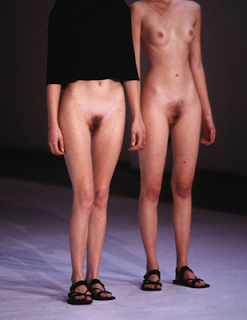|
| |
Francis Bacon | |
31.8.11
Francis says...
29.8.11
Watching you from across the room
(Image from Crafty Dogma)
The first photograph above was found on Flickr, and reminded me of images I took in the Pergamon Museum in Berlin, January 2010. The reflected sculptures on the glass added a second dimension to the picture and creates a trance like atmosphere for the viewer. There is something about them that I love very much because they give an illusion of a second meaning or something beyond the obvious. I am currently preparing to exhibit my work in a boutique window and so these images are offering different possibilities. Details to follow regarding the exhibition.
27.8.11
Analyze?
1. Hussein Chalayan
2. Paolo Roversi
The beginning of a project always reignites similar question for me: why am I looking at this? What does it mean? Endless queries that usually I cannot answer and I have to decide to simply embrace what I am leaning towards or give up. I can only laugh when unconsciously I end up looking at the same photographers, artists, designers....has to be a sign....for something atleast.
19.8.11
17.8.11
16.8.11
3.8.11
Floater
Floaters are deposits of various size, shape, consistency, refractive index, and mobility within the eye's vitreous humour, which is normally transparent. They may be of embryonic origin or acquired due to degenerative changes of the vitreous humour or retina. The perception of floaters is known as myodesopsia, or less commonly as myiodeopsia, myiodesopsia, or myodeopsia. Floaters are visible because of the shadows they cast on the retina or their refraction of the light that passes through them, and can appear alone or together with several others in one's field of vision. They may appear as spots, threads, or fragments of cobwebs, which float slowly before the observer's eyes. Since these objects exist within the eye itself, they are not optical illusions but are entoptic phenomena.
Subscribe to:
Posts (Atom)













